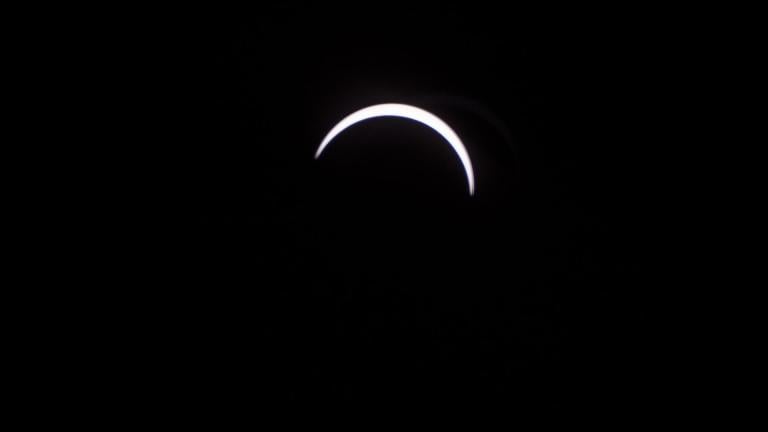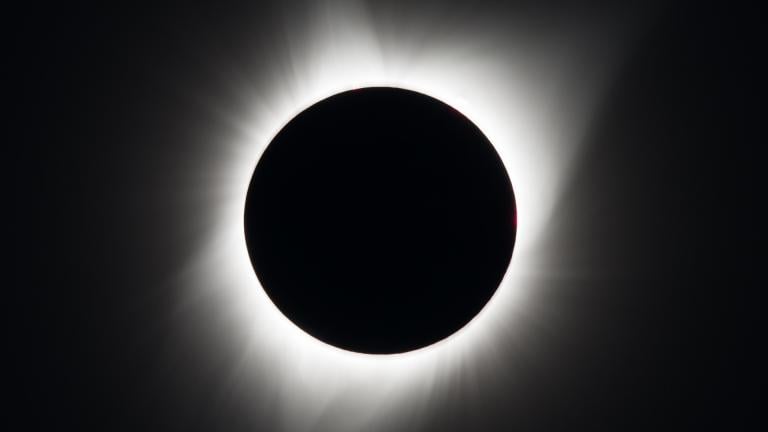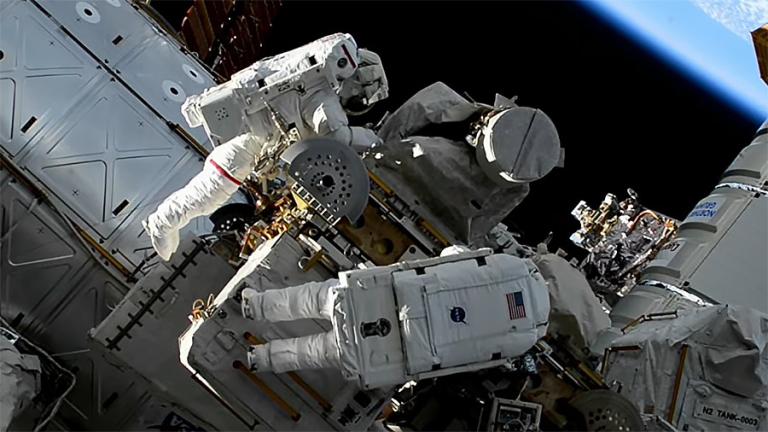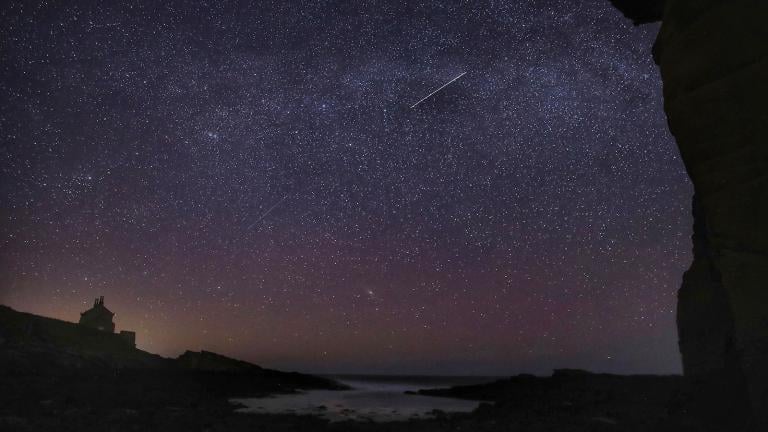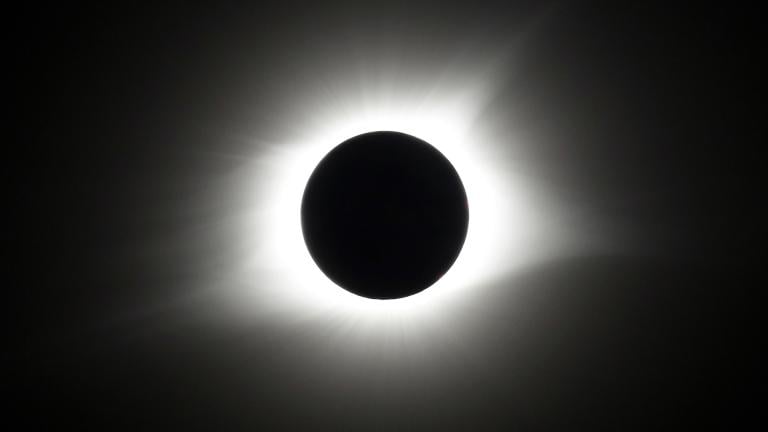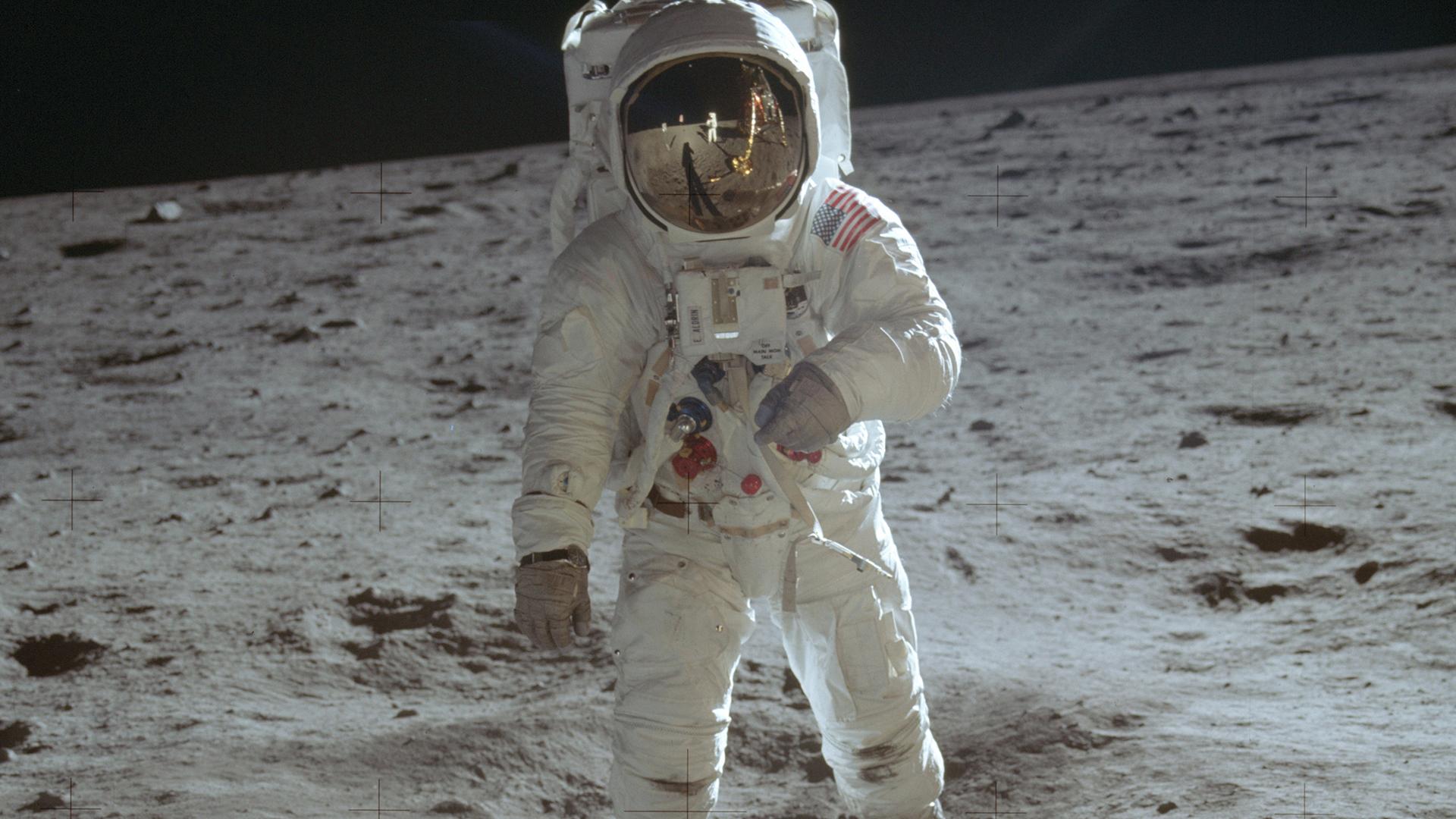 In this July 20, 1969 photo made available by NASA, astronaut Buzz Aldrin, lunar module pilot, walks on the surface of the moon during the Apollo 11 extravehicular activity. (Neil Armstrong / NASA via AP)
In this July 20, 1969 photo made available by NASA, astronaut Buzz Aldrin, lunar module pilot, walks on the surface of the moon during the Apollo 11 extravehicular activity. (Neil Armstrong / NASA via AP)
CAPE CANAVERAL, Fla. (AP) — A moonstruck nation celebrated the 50th anniversary of Apollo 11’s “giant leap” by Neil Armstrong and Buzz Aldrin at parties, races, ball games and concerts Saturday, toasting with Tang and gobbling MoonPies.
At NASA’s Kennedy Space Center, Aldrin showed Vice President Mike Pence the launch pad where he flew to the moon in 1969. At the same time halfway around the world, an American and two other astronauts blasted into space on a Russian rocket. And in Armstrong’s hometown of Wapakoneta, Ohio, nearly 2,000 runners competed in “Run to the Moon” races.
“Apollo 11 is the only event in the 20th century that stands a chance of being widely remembered in the 30th century,” the vice president said.
Wapakoneta 10K runner Robert Rocco, 54, a retired Air Force officer from Centerville, Ohio, called the moon landing by Armstrong and Aldrin “perhaps the most historic event in my lifetime, maybe in anybody's lifetime.”
At the Museum of Flight in Seattle, Gilda Warden sat on a bench and gazed in awe at the Apollo 11 command module, Columbia, on display. “It’s like entering the Sistine Chapel and seeing the ceiling. You want to just sit there and take it in,” said Warden, 63, a psychiatric nurse from Tacoma, Washington.
On July 20, 1969, Armstrong and Aldrin undocked from Columbia in lunar orbit and then descended in the lunar module Eagle to the Sea of Tranquility. The Eagle landed with just 17 seconds of fuel to spare. Six hours later, Armstrong was the first to step onto the lunar surface, proclaiming for the ages: “That’s one small step for man, one giant leap for mankind.” It was humanity’s first footsteps on another world.
In a speech at Kennedy, Pence paid tribute to Armstrong, Aldrin and command module pilot Michael Collins — if they’re not heroes, “then there are no heroes” — as well as the 400,000 Americans who worked tirelessly to get them to the moon.
Aldrin, 89, grabbed the right hand of Neil Armstrong’s older son, Rick, at Pence’s mention of heroes. He then stood and saluted, and received a standing ovation. Armstrong died in 2012. Collins, 88, did not attend the Florida ceremony. But Apollo 17’s Harrison Schmitt, the next-to-last man to walk on the moon in 1972, was there.
Pence reiterated the Trump administration’s goal of sending American astronauts back to the moon within five years and eventually on to Mars. He said this next generation of astronauts will spend weeks and months on the lunar surface, not just days and hours like the 12 Apollo moonwalkers did. Alongside the stage was the newly completed Orion capsule that will fly to the moon and back, on a test flight without a crew, in another year or two.
NASA had other celebrations going on Saturday, most notably at Johnson Space Center in Houston, home to Mission Control; the U.S. Space and Rocket Center next door to Marshall Space Flight Center in Huntsville, Alabama, where the Saturn V moon rockets were born; and the Smithsonian Institution’s National Air and Space Museum in Washington.
And where better to celebrate than Apollo, Pennsylvania — located in Armstrong County not far from Moon Township and the town of Mars. The historical society revived the annual moon-landing celebration in honor of the big 50. All of the Apollo astronauts have long been honorary citizens of Apollo, the society’s Alan Morgan said.
At New York’s Yankee Stadium, former space shuttle astronaut Mike Massimino threw out the ceremonial first pitch to former pitcher Jack Aker, who was on the mound when the July 20, 1969, baseball game was interrupted to announce that the Eagle had landed. Armstrong and Aldrin were “A1, No. 1, higher than major league,” Aker recalled Saturday. “It’s a mutual feeling,” Massimino agreed.
Across the country in Seattle, Tim Turner was first in line Saturday to see Columbia, the mother ship piloted by Collins as Armstrong and Aldrin moonwalked.
“Good grief! It’s still amazing, the No. 1 feat of the 20th century, if not all of modern history, that first time there,” said Turner, 57, a computer programmer from Poulsbo, Washington.
As he waited to get in to see Columbia, Craig Smith, 58, a veterinarian from Tacoma, Washington, recalled thinking as a boy: “’Dang! Seriously? A dude on the moon?’ I thought that was nifty.”
Clocks all over counted down to the exact moment of the Eagle’s landing on the moon — 4:17 p.m. EDT — and Armstrong’s momentous step onto the lunar surface at 10:56 p.m. EDT. The powdered orange drink Tang was back in vogue for the toasts, along with marshmallow and chocolate MoonPies, including a 55-pound, 45,000-calorie MoonPie at Kennedy’s One Giant Leap bash.
About 100 visitors and staff at the American Space Museum in Titusville, across the Indian River from Kennedy, cheered and lifted plastic champagne glasses of Tang at the moment of touchdown.
“This is what we’re here for, to share the American space experience,” explained executive director Karan Conklin, who led the toast.
For the late night-crowd, “first step” concerts were on tap at the Kennedy Center in Washington, outside in the shadow of a replica Saturn V rocket in Huntsville, and other sweltering locales.
A real rocket lit up the night sky in Kazakhstan.
Blasting off aboard a Russian Soyuz rocket in 100-degree heat, American Andrew Morgan, Italian Luca Parmitano and Russian Alexander Skvortsov flew to the International Space Station.
Only Skvortsov was alive at the time of Apollo 11. The three already living on the space station also were born long after the moon landings.
The crew deliberately modeled its mission patch after Apollo 11’s: no astronaut names included to show the universal nature of space flight. Morgan explained in a NASA interview that Apollo 11, and now his flight, represents “an accomplishment of the world and not one single country.”
Related stories:
Here’s a Fact: We Went to the Moon in 1969
Astronomers May Have Detected Neutron Star Being Consumed by Black Hole
Climate Scientist Swaps NASA for School of the Art Institute

